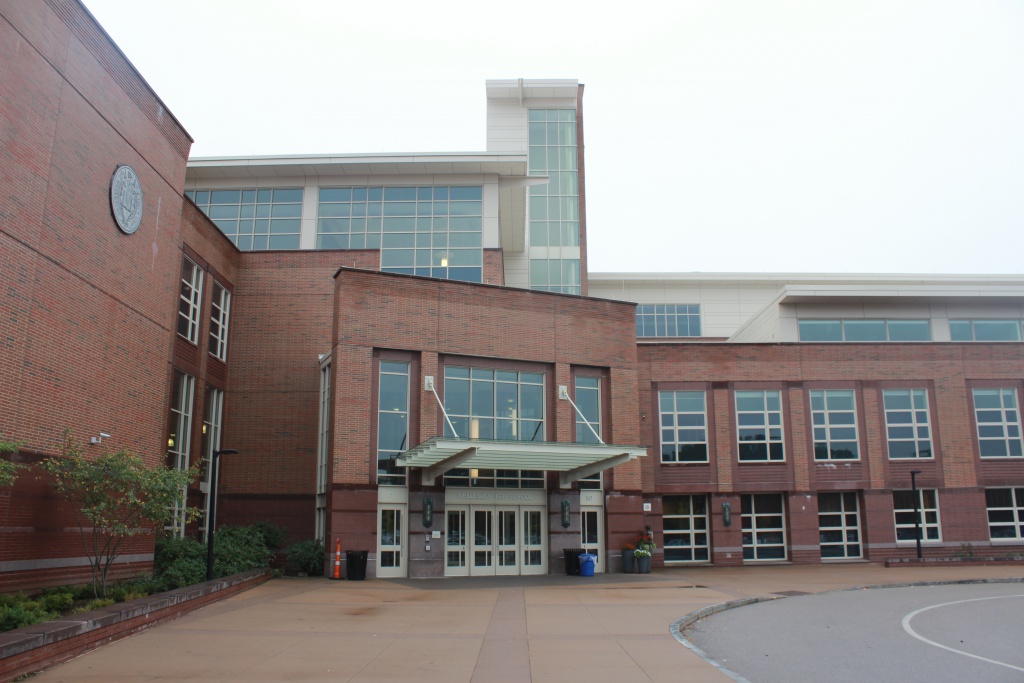Note: This article was written in the context after Thanksgiving break.
Conflicting opinions surrounded the decision to resume in-person learning at the high school on December 1 after Thanksgiving break.
While many members of the community were concerned about students and staff returning to the building after Thanksgiving because of potential exposures to COVID-19, the decision to return to the hybrid learning model also came after the high school went remote for two weeks due to a spike in positive COVID-19 cases. While I was initially among the group who was hesitant to return to in-person learning, I am now confident that the Wellesley Health Department made the right decision in bringing students and staff back into the building on December 1.
Since November 20, Wellesley has been classified as a yellow (moderate risk) COVID-19 town, down from a green (mild) status since summer. Still, Massachusetts state officials announced in early November that communities in the gray, green, and yellow COVID-19 risk categories were expected to offer in-person learning unless positive student or staff COVID-19 cases showed evidence of in-school transmission.
When the high school transitioned to a temporary remote learning model on November 11, Wellesley Public Schools superintendent Dr. David Lussier reported that there was evidence of in-school transmission in the spike in positive COVID-19 cases. In response, the School Department, Health Department, and Facilities Management Department launched a thorough investigation of the high school to understand how these in-school transmissions had occurred, discovering both that the main office was the primary origin of many of the cases and that the plexiglass dividers utilized throughout the building were, in fact, an impediment to air circulation.
The team used the two-week remote period to implement several new protocols to increase air circulation and decrease the number of people in the main office area at a given time, mitigating areas of concern to ensure that students and staff returned to a safer building on December 1.
In addition, prior to re-opening the building, the high school offered students and staff the opportunity for baseline viral COVID-19 testing on November 29. Approximately 1,200 members of the high school community participated in the round of testing, which produced only two positive cases. Nevertheless, many members of the high school community felt that it was an inadequate measure of safety to return to in-person learning.
According to the Center for Disease Control and Prevention (CDC), because COVID-19 has an incubation period ranging from two to fourteen days, these worried individuals argued that the implications of increased gatherings over Thanksgiving break would not be reflected in the testing, which occurred only three days after Thanksgiving. These individuals feared what the results of the next week of baseline viral COVID-19 testing would bring: the potential for unaccounted positive COVID-19 cases.
The testing collected on November 7 for Cohort A and November 8 for Cohort B (eleven and twelve days after Thanksgiving on November 26), however, revealed only one new positive case throughout the high school, strengthening my confidence that the return to in-person learning was safe.
In addition to the concrete evidence from the low viral COVID-19 testing numbers at the high school, I feel that the social and emotional benefits of physically being in the building and having face-to-face interactions are essential components of a safe learning environment, further reinforcing my sense that returning to in-person learning after Thanksgiving break was the right decision.
As cited by the American Psychological Association, access to a school environment is necessary for developing academic motivation and social development, and a lack of in-person learning leaves students to cope with isolation and the loss of face-to-face interactions amongst friends, peers, and teachers. The impacts of online learning worsen for students with disabilities, who often rely on in-person services provided by the school for academic, social, and emotional support to succeed.
According to Dr. Lloyd Fisher, the president of the Massachusetts Chapter of the American Academy of Pediatrics, the increase in schools turning to remote learning models have spiked a mental health crisis among children in Massachusetts. He notes that pediatricians are seeing double and triple the amount of people they normally do.
“I am really devastated. I see the sadness. I see them in my office every day. I see them struggling… We’re seeing teenagers and even young children coming in for their well-child visits who are having an increase in depression, anxiety, and, unfortunately, suicide attempts,” said Fisher to WCVB.
Given the social and emotional implications of remote learning, coupled with the minimal positive COVID-19 cases at the high school following Thanksgiving break, the decision to return to in-person learning was clearly the right one. Unless future cases reveal new evidence of in-school transmission, in-person learning must be the priority at the high school.

